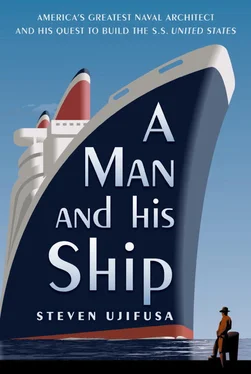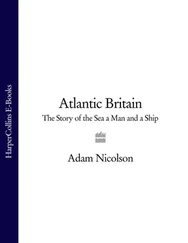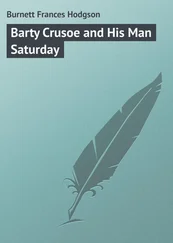In the end, because Morgan ran the company that owned the ship, the public decided he owned the disaster. “The ocean was too big for the old man,” a journalist concluded. 17But the great financier’s son, J. P. Morgan Jr., known as Jack, had been running the day-to-day affairs of the House of Morgan long before his father’s death. It was Jack Morgan who forced the disgraced Ismay to resign as chairman of IMM. But the great shipping trust could not get past the disaster. In 1915 it defaulted on its bonds and collapsed into bankruptcy, largely from the financial repercussions of the Titanic disaster.
The New York Chancery Court appointed IMM vice president Philip Franklin as the receiver in charge of reorganizing the company. Working long hours and capitalizing on climbing shipping rates, he did his best to try to rejuvenate the firm. Franklin did such a good job at bringing IMM back from the brink of collapse that the directors, including Jack Morgan, appointed him president of the company.
Aweek after the Titanic sank, on April 22, 1912, the crew of the Mackay-Bennett, a cable repair ship Philip Franklin chartered to recover bodies from the disaster site, found a soot-covered corpse floating amid the wreckage. Most of the three hundred bodies found were bloated and ghoulish. Still, this one stood out. The undertaker described the corpse on a card before it was embalmed and placed in a coffin:
NO. 124—MALE—ESTIMATED AGE 50—LIGHT HAIR & MOUSTACHE.
CLOTHING —Blue serge suit; blue handkerchief with “A.V.”; belt with gold buckle; brown boots with red rubber soles; brown flannel shirt; “J.J.A.” on back of collar.
EFFECTS —Gold watch; cuff links, gold with diamond; diamond ring with three stones; £225 in English notes; $2440 in notes; £5 in gold; 7s. in silver; 5 ten franc pieces; gold pencil; pocketbook.
FIRST CLASS. NAME—J.J. ASTOR 18
Vincent Astor met the Mackay-Bennett when it docked in Halifax, Nova Scotia, and brought his father home for burial in the churchyard of New York’s Trinity Church. The gold pocket watch found on his father’s body he kept. Restoring it to working order, Vincent would wear it on his own vest.
At twenty-one and now in possession of a $70 million inheritance, Vincent Astor then dropped out of Harvard to manage the family fortune. One of his first decisions was to sell off all of the family’s tenement properties. 19
In due course, Astor would become the lead investor in a ship designed by William Francis Gibbs that would become the anti- Titanic of maritime history—not just the fastest and most beautiful ship, but also the safest. For Gibbs, a ship’s safety at sea would become a complete and lifelong obsession, one that would trump the quest for size, beauty, or luxury.

5. PIPE DREAMERS AT WORK
As the public followed the Titanic disaster, William Francis Gibbs was keeping his promise to his father—attending Columbia Law School and entering law practice in New York. He hated both.
During class, he spent most of his time trying to solve engineering equations in his notebook. What frustrated Gibbs was how his love of ships continued to run hard against his own mathematical limitations. The fear of math, which had dogged him in high school and led to his poor undergraduate engineering grades, continued to bother him. His complete lack of interest in the law, however, spurred him to keep plugging away at the math culled from his collection of engineering journals. Moreover, the Titanic disaster had captured the public’s imagination. Ocean liner safety was now front-page news, which prompted Gibbs to look for a way out of being a lawyer.
But during his three years at Columbia, he began to display a sense of humor, and even play to the crowd. When a law professor once asked him what he thought about a classmate’s explanation of a case, he put his pencil down, rose to his feet, and mimicked the phrase the professor used to embarrass students who were not prepared: “The former speaker’s comments are interesting but immaterial and completely irrelevant.”
The entire class burst into guffaws. Even the professor cracked a smile.
Gibbs then sat down and went back to his engineering. 1
After graduating from Columbia Law School in 1913, he took a job at a real estate law firm in New York. He hated practicing law even more than studying it, but he dutifully sent money home to his cash-strapped family. The weekends provided his only release from this life of drudgery. Every Friday, he boarded a train for Philadelphia, and headed to his parents’ modest house on the Main Line. There, with his brother, Frederic, he set to work designing his dream ship: a one-thousand-foot American superliner, intended to be the fastest and best ever built, intended to surpass the ill-fated Titanic in every respect. Analyzing the design flaws of the era’s most modern liners, Gibbs sketched out his ship’s hull and power plant, his long fingers flying across the blueprints. Not far away, Frederic sat at a typewriter and banged out pages of financial analysis. They did their work in a cramped attic study. In the summer, under the hot roof, they could hear the Main Line trains pulling out of Haverford station, and the crack of the bats from the Merion Cricket Club across the street.
Life at the Haverford house was hardly serene. In July 1911, their father collapsed and was rushed to the hospital. The Philadelphia Inquirer reported that he underwent “a serious operation for internal troubles,” and that his family was “not permitted to see or talk to him because the physicians deemed that it would be taxing the patient’s strength.” 2William Warren Gibbs recovered, but two years later the family had another scare when the family’s rented Haverford house caught fire. Motorists leapt out of their cars to help the Gibbs brothers drag out what they could. The household was eventually put back together. 3The Gibbs brothers managed to salvage their plans and get back to work.
Like the garage inventors of the computer age, the brothers did not let surroundings distract them. Within a year or so, they were ready to present preliminary drawings for a duo of ocean liners. Judged by the standards Gibbs would set in the years to come, the designs were awkward and derivative, a hodgepodge of visual features from predecessors, and a four-stacked silhouette echoing British liners. The prototype would be 1,001 feet long, 119 feet longer than Titanic. But what really excited the twenty-nine-year-old, first-time designer were the engines. Even by current standards, they were monsters. Not only would the ships be big; they would be very fast—much faster than Mauretania.
Financing the project appeared impossible, especially since they had no formal training in ship design. Nevertheless, the Gibbs brothers felt this was their chance to change the direction of their lives and their country’s merchant marine. Passenger ships flying the American flag, such as the nearly twenty-year-old St. Louis, were obsolete and unable to compete for passengers. To realize their improbable dream, the brothers needed to sell their project to people with the money and know-how to finance its construction and operation.
There was only one American company that could do it: the International Mercantile Marine, then struggling to get out of bankruptcy. Somehow they had to get a meeting with the man in charge: John Pierpont Morgan Jr., son of the man who had financed the ill-fated Titanic. Clement Griscom, the company’s other cofounder and their father’s onetime business partner, was dead—the Gibbs brothers had to get to Morgan on their own.
Читать дальше













